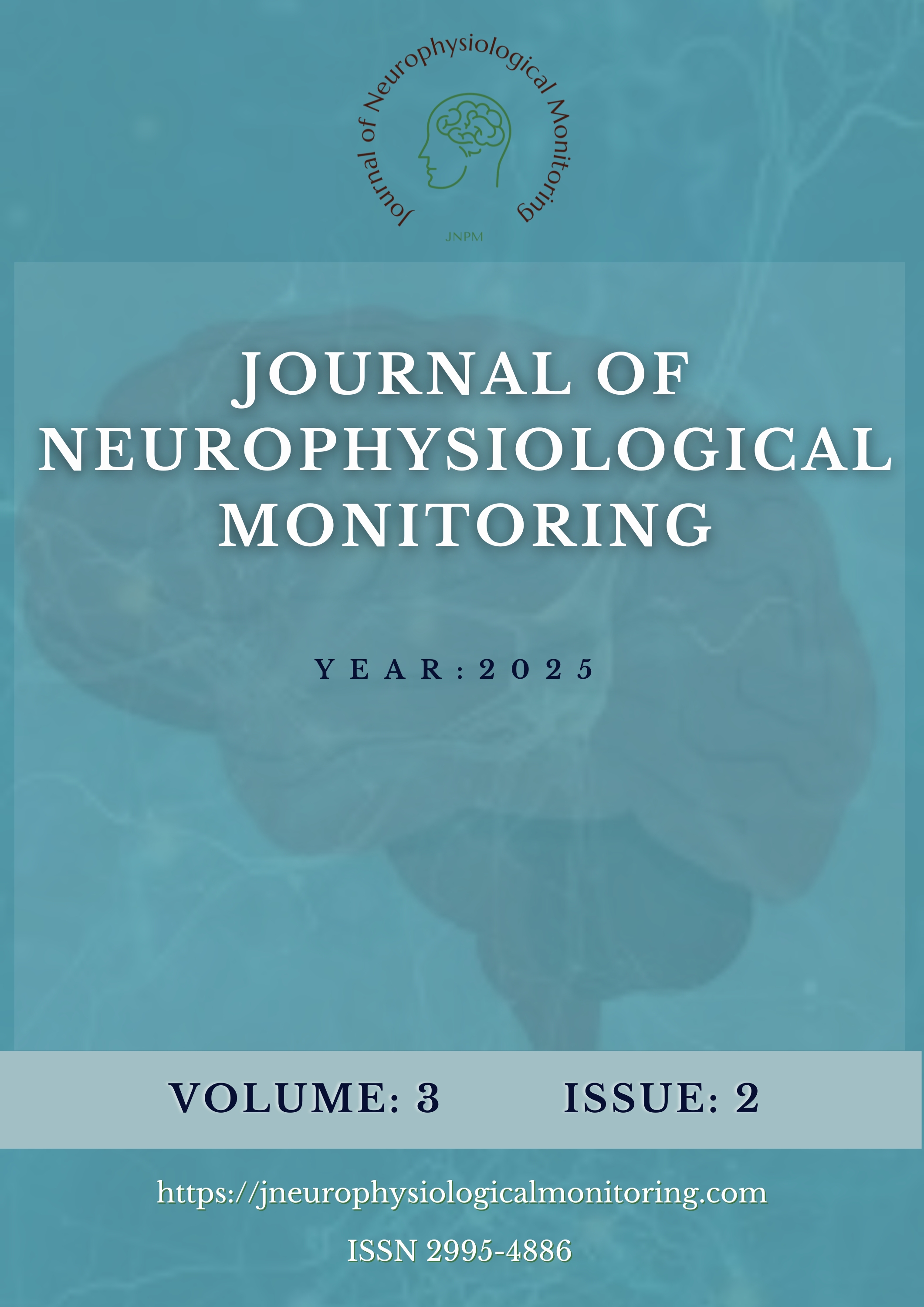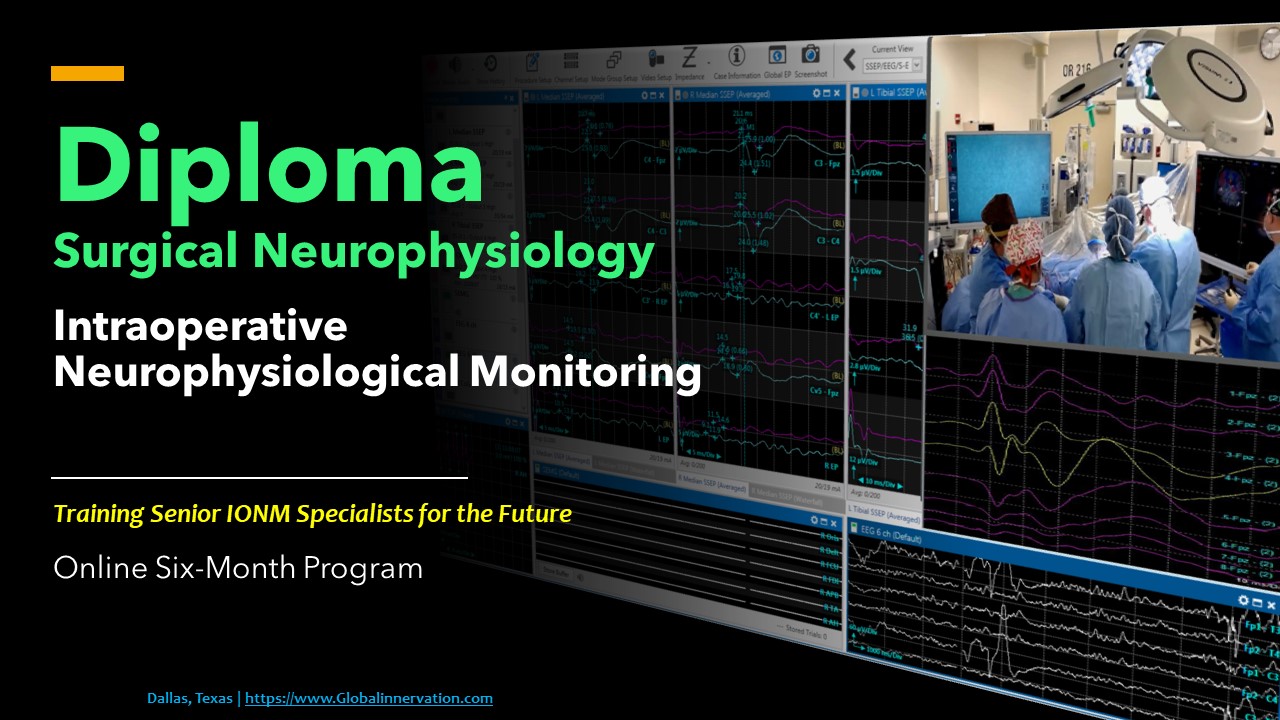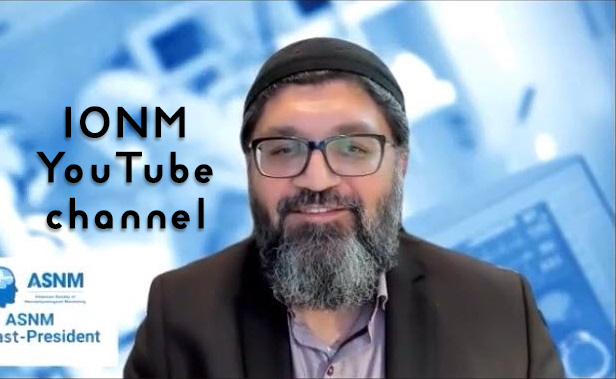Wired for Relief: Assessing the Risks and Rewards of DBS in Treatment-Resistant Obsessive Compulsive Disorder
DOI:
https://doi.org/10.5281/zenodo.16222883Keywords:
OCD, DBS, EEG, treatment, TMSAbstract
Obsessive-compulsive disorder (OCD) can be a lifelong and debilitating condition that can be resistant to pharmacological and psychotherapeutic treatments. Over the last couple of decades, the emergence of deep brain stimulation (DBS) has been proven as an effective form of treatment for patients with movement disorders such as Parkinson’s disease, and even for patients with epilepsy. With the previous success of DBS, this neurosurgical intervention has now also become a promising form of treatment for patients suffering from treatment-resistant OCD. But with its newness, its efficacy, safety, and long-term success remain under evaluation. The goal of this review is to evaluate, assess, and discuss the sustained long-term effectiveness, ideal target locations, risks, and safety, including suicide rates, and compare DBS to more non-invasive forms of treatment such as TMS (transcranial magnetic stimulation). The results showed that, after treatment, patients experienced a significant reduction in their mean Y-BOCS score.
References
Wu, H., Hariz, M., Visser-Vandewalle, V., Zrinzo, L., Coenen, V. A., Sheth, S. A., Bervoets, C., Naesström, M., Blomstedt, P., Coyne, T., Hamani, C., Slavin, K., Krauss, J. K., Kahl, K. G., Taira, T., Zhang, C., Sun, B., Toda, H., Schlaepfer, T., Chang, J. W., Nuttin, B. (2021). Deep brain stimulation for refractory obsessive-compulsive disorder (OCD): emerging or established therapy?. Molecular Psychiatry, 26(1), 60–65. https://doi.org/10.1038/s41380-020-00933-x.
Raviv N, Staudt MD, Rock AK, MacDonell J, Slyer J, Pilitsis JG. A Systematic Review of Deep Brain Stimulation Targets for Obsessive Compulsive Disorder. Neurosurgery. 2020 Nov 16;87(6):1098-1110. doi: 10.1093/neuros/nyaa249.
Poyraz CA, Turan Ş, Sağlam NG, Batun GÇ, Yassa A, Duran A. Factors associated with the duration of untreated illness among patients with obsessive compulsive disorder. Compr Psychiatry. 2015 Apr;58:88-93. doi: 10.1016/j.comppsych.2014.12.019.
Alonso, P., Cuadras, D., Gabriëls, L., Denys, D., Goodman, W., Greenberg, B. D., Jimenez-Ponce, F., Kuhn, J., Lenartz, D., Mallet, L., Nuttin, B., Real, E., Segalas, C., Schuurman, R., Tezenas du Montcel, S., & Menchon, J. M. (2015). Deep Brain Stimulation for Obsessive-Compulsive Disorder: A Meta-Analysis of Treatment Outcome and Predictors of Response. PLOS ONE, 10(7), e0133591. https://doi.org/10.1371/journal.pone.01335912.
Guzick, A. G., Hunt, P. J., Bijanki, K. R., Goodman, W. K., & Foote, K. D. (2020). Improving long-term patient outcomes from deep brain stimulation for treatment-refractory obsessive-compulsive disorder. Current Behavioral Neuroscience Reports, 7, 143– 155. https://doi.org/10.1007/s40473-020-00204-4.
Alonso, P., Cuadras, D., Gabriëls, L., Denys, D., & Soriano-Mas, C. (2021). Deep brain stimulation for obsessive-compulsive disorder: A systematic review of the literature. Frontiers in Psychiatry, 12, 847498. https://doi.org/10.3389/fpsyt.2021.8474983.
Fridgeirsson, E. A., Figee, M., Luigjes, J., & Denys, D. (2023). Deep brain stimulation for treatment-resistant obsessive- compulsive disorder: A randomized, double-blind, sham-controlled trial. Journal of Neurology, Neurosurgery & Psychiatry, 94(2), 88–96. https://doi.org/10.1136/jnnp-202.
Li, N., Baldermann, J. C., Kibleur, A., Treu, S., Akram, H., Elias, G. J. B., ... & Horn, A. (2020). A unified connectomic target for deep brain stimulation in obsessive-compulsive disorder. Nature Communications, 11(1), 3364. https://doi.org/10.1038/ s41467-020-16940-2.
Dougherty, D. D., Rezai, A. R., Carpenter, L. L., Howland, R. H., Bhati, M. T., O'Reardon, J. P., ... & Malone, D. A. (2021). A randomized sham-controlled trial of deep brain stimulation of the ventral capsule/ventral striatum for chronic treatment-resistant depression. Biological Psychiatry, 89(1), 28–38. https://doi.org/10.1016/j.biopsych.2020.09.0069.
Albert, U., De Ronchi, D., Maina, G., & Pompili, M. (2018). Suicide risk in Obsessive-Compulsive Disorder and exploration of risk factors: a systematic review. Current Neuropharmacology, 16(8). https://doi.org/10.2174/1570159x166661806201559414.
Eskander, N., Limbana, T., & Khan, F. (2020). Psychiatric Comorbidities and the Risk of Suicide in Obsessive-Compulsive and Body Dysmorphic Disorder. Cureus, 12(8). https://doi.org/10.7759/cureus.980510.
Swierkosz-Lenart, K., Dos Santos, J. F. A., Elowe, J., Clair, A.-H., Bally, J. F., Riquier, F., Bloch, J., Draganski, B., Clerc, M.- T., Pozuelo Moyano, B., von Gunten, A., & Mallet, L. (2023). Therapies for obsessive-compulsive disorder: Current state of the art and perspectives for approaching treatment-resistant patients. Frontiers in Psychiatry, 14(1). https://doi.org/10.3389/ fpsyt.2023.1065812.
Menchón, J. M., Real, E., Alonso, P., Antonio, M., Cinto Segalàs, Plans, G., Luyten, L., Els Brunfaut, Laurean Matthijs, Raymakers, S., Bervoets, C., Antonio Perez Higueras, Majed Katati, Guerrero, J., Hurtado, M., Mercedes Sotos Prieto, Stieglitz, L., Georg Löffelholz, Walther, S., & Pollo, C. (2019). A prospective international multi-center study on safety and efficacy of deep brain stimulation for resistant obsessive-compulsive disorder. 26(4), 1234–1247. https://doi.org/10.1038/s41380-019-0562-6.
Costanza, A., Radomska, M., Bondolfi, G., Zenga, F., Amerio, A., Aguglia, A., Serafini, G., Amore, M., Berardelli, I., Pompili, M., & Nguyen, K. D. (2021). Suicidality Associated With Deep Brain Stimulation in Extrapyramidal Diseases: A Critical Review and Hypotheses on Neuroanatomical and Neuroimmune Mechanisms. Frontiers in Integrative Neuroscience, 15. https://doi.org/10.3389/fnint.2021.6322497.
Mar-Barrutia L, Real E, Segalás C, Bertolín S, Menchón JM, Alonso P. Deep brain stimulation for obsessive-compulsive disorder: A systematic review of worldwide experience after 20 years. World J Psychiatry. 2021 Sep 19;11(9):659-680. doi: 10.5498/wjp.v11.i9.659.
Holland, M. T., Trapp, N. T., McCormick, L. M., Jareczek, F. J., Zanaty, M., Close, L. N., Beeghly, J., & Greenlee, J. D. W. (2020). Deep Brain Stimulation for Obsessive–Compulsive Disorder: A Long Term Naturalistic Follow Up Study in a Single Institution. Frontiers in Psychiatry, 11. https://doi.org/10.3389/fpsyt.2020.00055 14.
Bourne, S. K., Eckhardt, C. A., Sheth, S. A., & Eskandar, E. N. (2012). Mechanisms of deep brain stimulation for obsessive compulsive disorder: effects upon cells and circuits. Frontiers in Integrative Neuroscience, 6. https://doi.org/10.3389/fnint.2012.000295.
Provenza, N. R., Matteson, E. R., Allawala, A. B., Barrios-Anderson, A., Sheth, S. A., Viswanathan, A., McIngvale, E., Storch, E. A., Frank, M. J., McLaughlin, N. C. R., Cohn, J. F., Goodman, W. K., & Borton, D. A. (2019). The Case for Adaptive Neuromodulation to Treat Severe Intractable Mental Disorders. Frontiers in Neuroscience, 13. https://doi.org/10.3389/fnins.2019.00152.
Raymaekers, S., Luyten, L., Bervoets, C., Gabriëls, L., & Nuttin, B. (2017). Deep brain stimulation for treatment-resistant major depressive disorder: a comparison of two targets and long-term follow-up. Translational Psychiatry, 7(10), e1251. https:// doi.org/10.1038/tp.2017.66.
Ruan, H., Wang, Y., Li, Z., Tong, G., & Wang, Z. (2022). A Systematic Review of Treatment Outcome Predictors in Deep Brain Stimulation for Refractory Obsessive-Compulsive Disorder. Brain Sciences, 12(7), 936–936. https://doi.org/10.3390/ brainsci12070936.
Schermer, M. (2011). Ethical issues in deep brain stimulation. Frontiers in Integrative Neuroscience, 5(17). https:// doi.org/10.3389/fnint.2011.00017.
Lusicic, A., Schruers, K. R., Pallanti, S., & Castle, D. J. (2018). Transcranial magnetic stimulation in the treatment of obsessive- compulsive disorder: current perspectives. Neuropsychiatric disease and treatment, 14, 1721–1736. https://doi.org/10.2147/ NDT.S121140.
Wexler A, Nagappan A, Kopyto D, Santarnecchi E, Pascual-Leone A. Off-Label Promotion of Transcranial Magnetic Stimulation on Provider Websites. Brain Stimul. 2021 May-Jun;14(3):723-724. doi: 10.1016/j.brs.2021.04.013.
Liang, K., Li, H., Bu, X., Li, X., Cao, L., Liu, J., Gao, Y., Li, B., Qiu, C., Bao, W., Zhang, S., Hu, X., Xing, H., Gong, Q., & Huang, X. (2021). Efficacy and tolerability of repetitive transcranial magnetic stimulation for the treatment of obsessive-compulsive disorder in adults: a systematic review and network meta-analysis. Translational Psychiatry, 11(1), 332. https://doi.org/10.1038/ s41398-021-01453-0.
Roth Y, Tendler A, Arikan MK, Vidrine R, Kent D, Muir O, MacMillan C, Casuto L, Grammer G, Sauve W, Tolin K, Harvey S, Borst M, Rifkin R, Sheth M, Cornejo B, Rodriguez R, Shakir S, Porter T, Kim D, Peterson B, Swofford J, Roe B, Sinclair R, Harmelech T, Zangen A. Real-world efficacy of deep TMS for obsessive-compulsive disorder: Post-marketing data collected from twenty-two clinical sites. J Psychiatr Res. 2021 May;137:667-672. doi: 10.1016/j.jpsychires.2020.11.009.
Kar, S. K., Agrawal, A., Silva-dos-Santos, A., Gupta, Y., & Deng, Z.-D. (2024). The Efficacy of Transcranial Magnetic Stimulation in the Treatment of Obsessive-Compulsive Disorder: An Umbrella Review of Meta-Analyses. CNS Spectrums, 29(2), 109–118. https://doi.org/10.1017/S1092852923006387.
Najafi K, Fakour Y, Zarrabi H, Heidarzadeh A, Khalkhali M, Yeganeh T, Farahi H, Rostamkhani M, Najafi T, Shabafroz S, Pakdaman M. Efficacy of Transcranial Direct Current Stimulation in the Treatment: Resistant Patients who Suffer from Severe Obsessive-compulsive Disorder. Indian J Psychol Med. 2017 Sep-Oct;39(5):573-578. doi: 10.4103/IJPSYM.IJPSYM_388_16.
Ueno, S., & Sekino, M. (2021). Figure-Eight Coils for Magnetic Stimulation: From Focal Stimulation to Deep Stimulation. Frontiers in Human Neuroscience, 15, 805971. https://doi.org/10.3389/fnhum.2021.805971.
Brunelin, J., Mondino, M., Bation, R., Palm, U., Saoud, M., & Poulet, E. (2018). Transcranial Direct Current Stimulation for Obsessive-Compulsive Disorder: A Systematic Review. Brain Sciences, 8(2), 37. https://doi.org/10.3390/brainsci80200376.
Xie, L., Hu, P., Guo, Z., Chen, M., Wang, X., Du, X., Li, Y., Chen, B., Zhang, J., Zhao, W., & Liu, S. (2024). Immediate and long-term efficacy of transcranial direct current stimulation (tCDS) in obsessive-compulsive disorder, posttraumatic stress disorder and anxiety disorders: a systematic review and meta-analysis. Translational Psychiatry, 14(1). https://doi.org/10.1038/ s41398-024-03053-0
Laurito LD, Loureiro CP, Dias RV, et al. (2022) Acceptance and Commitment Therapy for obsessive compulsive disorder in a Brazilian context: Treatment of three cases, Journal of Contextual Behavioral Science, 24, 134-140, https://doi.org/10.1016/j.jcbs.2022.04.002.
Pinckard-Dover, H., Ward, H., & Foote, K. D. (2021). The Decline of Deep Brain Stimulation for Obsessive-Compulsive Disorder Following FDA Humanitarian Device Exemption Approval. Frontiers in Surgery, 8, 642503. https://doi.org/10.3389/ fsurg.2021.642503.
Visser-Vandewalle, V., Andrade, P., Mosley, P.E. et al. (2022). Deep brain stimulation for obsessive–compulsive disorder: a crisis of access. Nature Medicine, 28, 1529–1532. https://doi.org/10.1038/s41591-022-01879-z.
Downloads
Published
How to Cite
Issue
Section
License
Copyright (c) 2025 J of Neurophysiological Monitoring

This work is licensed under a Creative Commons Attribution 4.0 International License.





